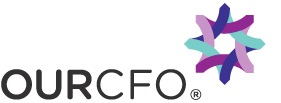
Hey guys! Greg Smargiassi here again from OURCFO with another edition of Future Proof.
Today we're going to complete the wrap-up with the Canary Ratio being the difference between profit and cash. The last two items that we're going to look at are capital expenditure and dividends. So capital expenditure is sometimes funded using debt. So if you buy a vehicle or some other kind of equipment you may use money to or debt to borrow the money to purchase a capital item.
Sometimes you'll just use money straight out of cash flow. So if it's a laptop, maybe a desk, a chair, some kind of computer or small item, rather than going off to the bank to borrow money to do that, you just pay for that out of cash flow. And if that happens semi-regularly or several times over a financial year then that begins to add up. It starts to add up in terms of how much money you've taken out of cash flow. So again when you calculate your profitability, capital expenditure is not included inside the profit and loss report calculation.
Capital expenditure actually comes after that, so your profit is also covering capital expenditure and again that is why a difference is caused between your profit position and your cash flow position. In similar fashion, when you pay out a dividend it's the same scenario. So the profit and loss statement does not include dividends that have been paid to you. If it's in respect of a shareholding or even a trust distribution or something along those lines, that's not included in the profit and loss report. It's not included in the profit and loss calculation. So dividends and small items of capital expenditure that are paid out of cashflow also contribute to that difference between profit and cash flow.
So to summarise the reason that we have a difference between the profit and loss report or what's reported in your profit and loss statement and your cash flow position, the culprits for that are the movement in your working capital; the paying down of debt; the paying of income tax; capital expenditure; and dividends. So if you can measure those things in your business and understand the dynamics around those five cash flow issues...if you've got them measured, you can also strategise them and look in a forward direction and plan that out to ensure to the very best of your ability that your business will be cash flow positive on an ongoing basis. Hope that's helpful.
Greg Smargiassi again signing out with another edition of Future Proof and I look forward to seeing you again soon.